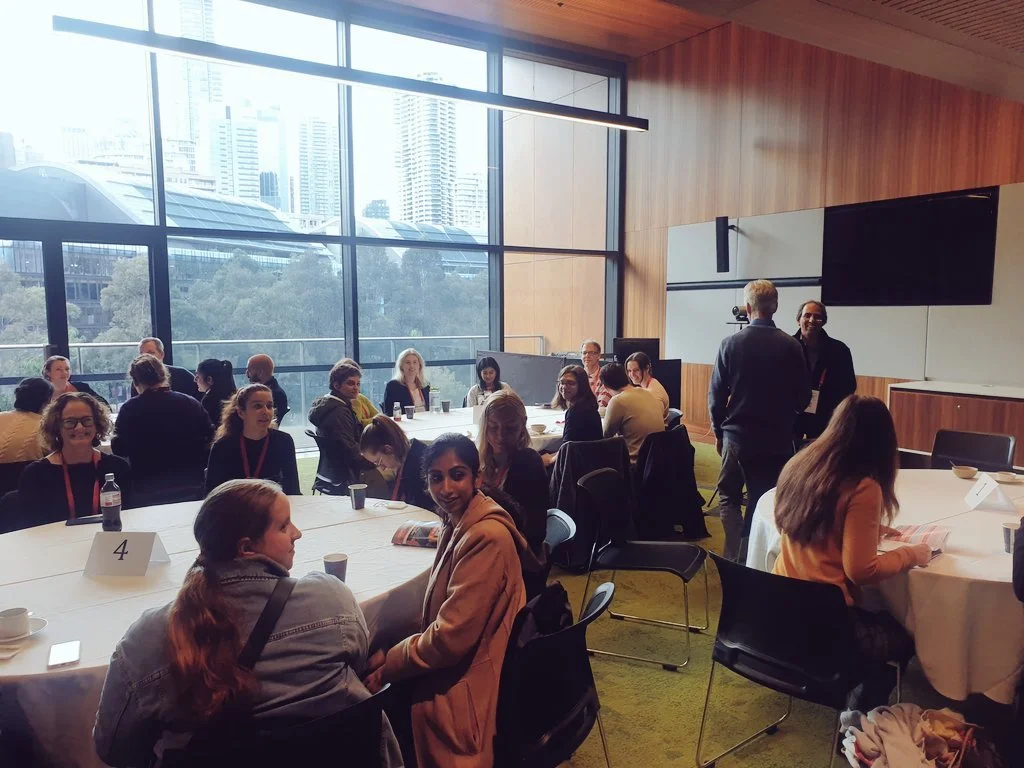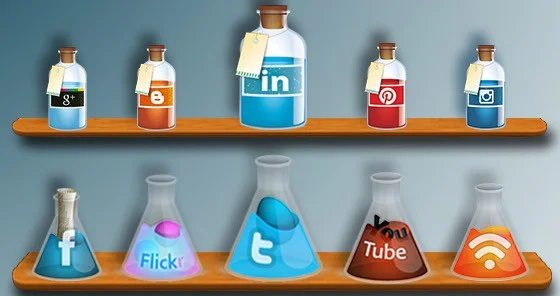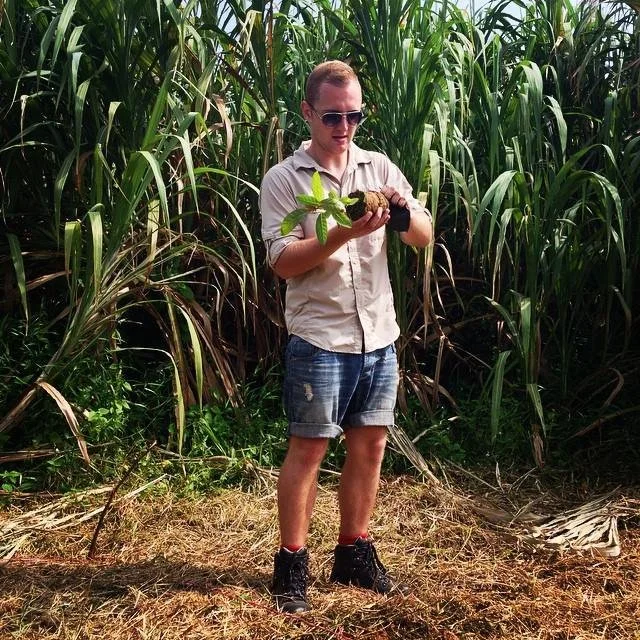A great opportunity came up last week for our new ASM communications ambassadors when we received an email from a Year 6 student, Evan, asking some questions about microbiology. Together some of our ambassadors collaborate on the questions, along with input from one of our past Presidents Professor Roy Robins-Browne.
Read More1951: The race is on to unlock the secret of everyone’s life. An ambitious young scientist, Rosalind Franklin, might hold the key to decoding DNA and have a Nobel Prize-worthy discovery within her reach. In a world dominated by men, a dedicated woman sacrifices her life in a relentless pursuit of science. Photo 51 is the nickname given to an X-ray diffraction image taken by Raymond Gosling in May 1952, under the supervision of Rosalind Franklin. X-ray crystallography, the technique Franklin used to produce Photo 51 of DNA, is a method scientists use to determine the three-dimensional structure of a particular crystal. Our ASM communications ambassador Binod Rayamajhee, PhD Candidate, School of Optometry & Vision Science, Faculty of Medicine & Health, UNSW, Sydney, Australia shares an interview with Anna Ledwich, Director of Photograph 51.
Read MoreOur communications ambassador Aditi Aiyer (PhD candidate, Infectious Diseases and Immunology, The University of Sydney) shares her experience from the Nancy Millis breakfast.
For early career researchers, Day 2 of the Australian Society of Microbiology 2022 conference meant a very chilly, very early morning at the ICC Darling Harbour. Young researchers gathered from across Australia to foster new connections, eat croissants and, most importantly, have our morning coffees
Read MoreWe ASM communication ambassadors had the privilege to hear about #SciComm from two experts, Kylie Ahern and AJ Epstein from STEM Matters - an Australian company focused on strategies to enhance scientific communication to broader audiences. Here are a few pointers from my perspective to improve your #SciComm game.
Read MoreYour ASM communications ambassadors share information to members and the public through our ASM social media accounts, online community and through their personal profiles. This month we met online to learn more about science communication and some successful tips for creating visual stories.
Read MoreOur ASM Vice President (communications) Rebecca LeBard, School of Biotechnology and Biomolecular Sciences, UNSW shares some insights on science communication.
Why did a scientist paint large eyes on the backsides of cows? To train lions.
It isn’t a joke that you have missed the punchline on, but a solution to the problem of lions killing the livestock of subsistence farmers in rural Botswana. But is it a story worth sharing? This story shouldn’t be shared to save cows or to draw attention to the research itself. It is important to share the story as we need to tell more stories about science and scientists.
Read MoreOur ASM Vice President (communications) Rebecca LeBard, School of Biotechnology and Biomolecular Sciences, UNSW shares some insights on science communication.
“Without our science communicators to publicly inform, explain, teach, decode, counter misinformation and debate science matters many would remain in a space where they don’t have [the] information they need, leading to poor choices being made at really crucial times.”
The Prime Minister of New Zealand used these words to describe science communicators this week as she thanked them for their crucial role in society. She emphasised this role in leading public engagement with science is important not just in times of catastrophe. Jacinda has strongly supported their role, but many have commented that she has delivered a Masterclass in science communication herself over the last few months.
Read MoreOur communications ambassador Martina Jelocnik, ARC DECRA Research Fellow, Genecology Research Centre / Chlamydia Research Group at the University of The Sunshine Coast, shares her a week in research during the current pandemic.
The ongoing SARS-Cov2 pandemic, together with implemented measures to control the coronavirus spread, has not just impacted our daily activities, but also imposed new challenges to the conducting research as we know it.
Recently, we (the ASM) asked on Twitter: “Has or has not the coronavirus isolation changed our work as microbiologists, and what are the different ways microbiologists (and in general, researchers) are adapting?”. The adaptions to the “new normal” research and challenges will be different for each of us. In an attempt to answer the question above from a new PI perspective, I compared my regular week in research to my recent “new normal” week in isolation and/or working under restricted access with physical distancing measures.
Read MoreIf the current model of choosing a supervisor is like taking part in the TV show ‘Married at First Sight’ wouldn’t it be great if there was a source, like RateMySupervisor.com, where you could see if the supervisors values matched your own? Supervisors could self-nominate their values and mentoring style but previous and current staff and students could also give anonymous feedback, resulting in a scoring system from excellent to poor on a range of classifications.
Read More
Have you watched science TV shows and wondered what makes good TV in the world of science? How do you engage the largest possible audience? How do you balance accurate information with comprehensibility? How are the topics, presenters and narrative are chosen? Our communications ambassador Laura McCaughey was fortunate enough to learn the answers to these questions while working at the ABC for a week.
Read MoreTips from one our communications ambassadors, Rhys White, a PhD candidate in the Beatson Lab & The Australian Centre for Ecogenomics, The University of Queensland.
All of us face networking opportunities throughout our careers. From institutional social mixers to (inter)national conferences, symposia to workshops. In most instances, building networks can be crucial and even life changing. Don’t panic, I don’t know anyone who finds networking easy! Yet, introverts are repeatedly told to act like extroverts?!? Hopefully this blog post will come in handy at your next networking opportunity.
Read MoreIn today’s world, simply doing science is not enough, we must also communicate it. Science communication involves sharing, educating, and bringing awareness to scientific topics. Scientists are passionate about expanding knowledge and solving problems; however, we struggle to communicate our research findings outside of specialised scientific audiences. An important part of our job though is communicating our findings to individuals in other fields, government and policy makers, and the general public.
Read MoreHere our communications ambassador Christopher Stubenrauch, a post doc at Monash University, shares his thoughts on research metrics and impact.
Picture a ‘sliding doors’ moment, where in one scenario I publish in Nature and in the other I publish the same article in a (seemingly) “lesser” journal. To a funding body, that is all the difference in the world, but you and I know there’s no real difference…
Read MoreFor National Science Week our ASM communications ambassadors shared their journeys on social media using the hashtag #stemgotmehere. Here, Rhys White shares his journey into STEM and microbiology.
I had a placement with my Bachelor of Science at Cardiff University to Danau Girang Field Centre in Borneo. I saw deforestation and helped with rehabilitation by planting trees. We tracked primates using UHF downloads and radio telemetry, supervised primate surveys, field courses, and night walks. I developed my science communication skills at this time through co-writing newsletters.
Read MoreThis year I was very fortunate to receive the Millis-Colwell Award from the Australian Society for Microbiology (ASM) which supported my attendance to the American Society for Microbiology’s Microbe conference and a two-week research visit to Professor Deborah Hung’s laboratory at Harvard University. I was very excited about this trip to the US, encountered many excellent researchers and was inspired by their impressive research programs. So here I would like to share my experience with our community of microbiology researchers.
Read MoreFor our two plenaries, Noah Fierer shared what the microbial ecology of our homes can tell about us, and Sarah Gurr detailed the fungal plant pathogens that threaten native species and agriculture around the world.
In the evening Tilman Ruff AO delivered the Rubbo Oration and stunned us with the state of the world’s nuclear arsenal, yet gratified us as we heard the efforts of ICAN to establish a Treaty on the Prohibition of Nuclear Weapons - earning the organisation the Nobel Peace Prize in 2017. Afterwards, delegates dined, drank and danced at the stellar Rubbo celebration.
Read MoreDay two started early for those attending the Nancy Millis Mentoring breakfast, and was filled with many great talks including our plenaries by Alan Landay and Karen Carroll, the recipients of the ASM Nancy Millis Student Awards from each branch, and the recipients of the ASM Frank Fenner and ASM Jim Pittard Awards.
Read MoreAttendees started to arrive on Sunday afternoon to the Adelaide Convention Centre, a central location with a beautiful view of the River Torrens. After picking up their conference booklet, registration tag and greeting friends they moved into the theatre to an acknowledgement of country and welcome to delegate by ASM President Dena Lyras.
Read MoreASM endorses the recent consensus statement signed by 30 scientists that documents the role and global importance of microbes in climate change biology, and calls for their immediate inclusion into research, technology development, and policy and management decisions.
Read More
















